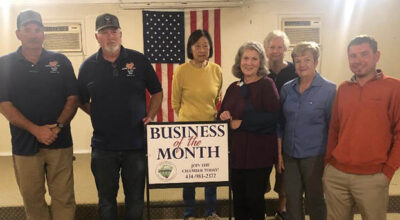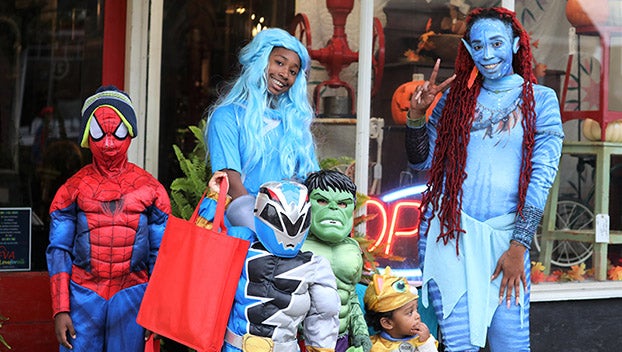Happy to be here: Celebrities and Celebri-Trees
Published 6:32 pm Friday, September 1, 2023
|
Getting your Trinity Audio player ready...
|
Some people enjoy watching for celebrities, and Farmville has seen a fair number throughout its history. Generals. Civil rights icons. National political leaders. World-class performers who come to entertain and instruct students at Longwood University and Hampden-Sydney College.
Many of today’s most talked-about celebrities seem to be sports heroes, recording artists, movie stars, and television personalities. Their status comes and goes based on current fashion, popular taste, and this season’s win-loss record.
When it comes to recognizing these paragons of popularity, I’m woefully out of touch. If I stood next to one of them at the grocery store, that celebrity could continue shopping in perfect anonymity.
Instead, I’m learning to recognize a different sort of notable dignitary. Famous trees. Celebri-trees. They stand tall and proud. They don’t mind my staring. And they don’t hide behind sunglasses.
For starters, let me introduce you to one of the first with which I made an acquaintance, oak. Oak is so celebrated, there’s even a street in Farmville named after it.
There are more than fifty different kinds of oaks in North America, but they come in two main varieties, white and red. A white oak is one specific type of tree in a general category of white oaks, a category that also includes bur oak, post oak, and chestnut oak. You can recognize white oaks by the rounded, lobed fingers or edges of their leaves.
Oaks with pointy fingers on their leaves are red oaks. There are northern red oaks and southern red oaks (also called Spanish oaks), along with pin oaks and black oaks (which, despite their name, are in the “red” classification).
Here’s a hint for finding oak trees: If it makes acorns, it’s an oak. Those acorns form an important part of the food supply for wildlife. Several kinds of birds eat them, including wild turkeys, blue jays, quail, and some woodpeckers. Animals that munch on acorns include deer, opossums, racoons, mice, rabbits, and bears. And, yes, let’s not forget the squirrels. However, I can personally attest to the fact that having acorn-producing oaks in your backyard will not keep the squirrels out of your bird feeder.
Maple trees don’t make acorns. They produce distinctive, winged structures that twirl in the wind. Scientists call these samaras, but more commonly they are called helicopters or whirligigs. Maple leaves have sections that reach out from a common point and feature toothed edges resembling a saw. Sweetgum leaves look somewhat similar to maple leaves, but they have a more star-like appearance.
For regionally admired superstars, the iconic southern magnolia deserves acclaim. It produces large white blossoms, boasts evergreen leaves, and can stand sixty to eighty feet tall. The flowering dogwood also holds a place of honor. It was designated as Virginia’s state flower in 1918 and state tree in 1956.
Many more celebri-trees fill important functions in our neighborhoods and local ecosystem. To name just a few, there’s an assortment of pines, poplar, eastern redcedar, persimmon, holly, redbud, black cherry, sycamore, sassafras, pawpaw, red mulberry, various elms, beech, birch, hornbeam, hickory, and walnut.
These actors will play distinctive roles in the current season’s upcoming grand finale. On a stage set with an evergreen background, maple trees will be cast in a starring position to produce brilliant scarlets and bright oranges. Notable supporting performers will include black gum (red), dogwood (red to maroon), poplar (yellow), beech (yellow to orange), and oak (red, through a spectrum of browns).
Celebri-trees stand and watch all around us. According to the Virginia Department of Forestry, nearly two-thirds of our state is covered in forests. They serve vital environmental, economic, and cultural functions, “Forests filter our water, clean our air, moderate our climate, provide wildlife habitat, protect and enhance the soil, and offer recreational opportunities. They are scenic places for observing nature and renewing the spirit. Forests also provide thousands of products we use daily, such as lumber and paper, and thousands of jobs.”
If you want to learn more about our local celebri-trees, check out some of the resources available from the Virginia Department of Forestry at dof.virginia.gov. You can find the “Learn” section of their website under the “Education and Recreation” tab.
Karen Bellenir has been writing for The Farmville Herald since 2009. Her book, Happy to Be Here: A Transplant Takes Root in Farmville, Virginia features a compilation of her columns. It is available from PierPress.com. You can contact Karen at kbellenir@PierPress.com.





